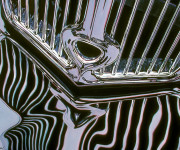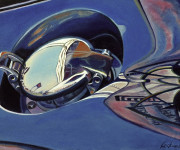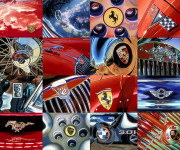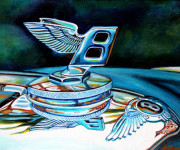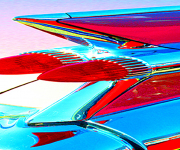Car Design
It is no accident that Car Design teams include artists because automotive design is primarily concerned with developing the visual appearance or aesthetics of the vehicle – exterior, interior, color and trim.
In the early days of automobiles the main concern was function and technical innovation – the cars were boxy-looking and mostly black.
Then in the 1920’s and 1930’s came the Art Deco movement – cars featured swooping fenders, long hoods, and highly streamlined shapes. Often two-door coupes and roadsters with small, rounded-off trunks, round headlights and lots of chrome. They weren’t just about simple transportation — they were about making bold statements and high style – they were exciting and sexy.
The Hood Ornaments and Gas Caps galleries include portraits of design features that enhanced the appearance of these beautiful kinetic sculptures.
The 1940’s brought the tailfin and other aeronautical references to auto design followed by more futuristic designs in the mid 1950’s. These cars and those of the 1960’s had one thing in common – lots of chrome. In the Stretch gallery are examples of tailfins, radiator grilles, wire wheels and other design features that have been further pushed to accentuate these streamlined styles.
The Lagniappe gallery features images that are not easily classified. A spark plug, a headlight, reflections of houses, cars and landscapes in cars, Art Deco radiator grilles and lots of chrome.
The Auto Grid gallery uses multiple images to represent detailed features of the same marque or different styles of logos, badges and trim from a variety of marques.
Engines can come in an array of different designs, including Straight/Inline, V-Type, Boxer, Rotary, Diesel, Electric and Hybrid. But engines are not just mechanical objects they can be beautifully designed intricate works of art – visual eye candy.


